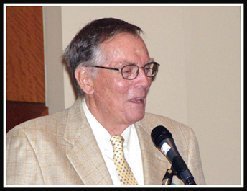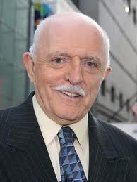Nebraska (/nəˈbræskə/ ⓘ nə-BRASS-kə) is a landlocked state in the Midwestern region of the United States. It borders South Dakota to the north; Iowa to the east and Missouri to the southeast, both across the Missouri River; Kansas to the south; Colorado to the southwest; and Wyoming to the west. Nebraska is the 16th largest state by land area, with just over 77,220 square miles. With a population of over 1.9 million, it is the 37th most populous state and the 7th least densely populated. Its capital is Lincoln, and its most populous city is Omaha, which is on the Missouri River. Nebraska was admitted into the United States in 1867, two years after the end of the American Civil War. The Nebraska Legislature is unlike any other American legislature in that it is unicameral, and its members are elected without any official reference to political party affiliation.
Lincoln^
Nebraska is composed of two major land regions: the Dissected Till Plains and the Great Plains. The Dissected Till Plains region consists of gently rolling hills and contains the state's largest cities, Omaha and Lincoln. The Great Plains region, occupying most of western Nebraska, is characterized by treeless prairie. Eastern Nebraska has a humid continental climate while western Nebraska is primarily semi-arid. The state has wide variations between winter and summer temperatures; the variations decrease in southern Nebraska. Violent thunderstorms and tornadoes occur primarily during spring and summer, and sometimes in autumn. Chinook wind tends to warm the state significantly in the winter and early spring.
Indigenous peoples, including Omaha, Missouria, Ponca, Pawnee, Otoe, and various branches of the Lakota (Sioux) tribes, lived in the region for thousands of years before European exploration. The state is crossed by many historic trails, including that of the Lewis and Clark Expedition. The completion of the Transcontinental Railroad through Nebraska and passage of the Homestead Acts led to rapid growth in the population of Euro-American settlers in the 1870s and 1880s and the development of a large agriculture sector for which the state is known to this day.
Etymology
Nebraska's name is the result of anglicization of the archaic Otoe Ñí Brásge (contemporary Otoe: Ñíbrahge; pronounced [ɲĩbɾasꜜkɛ]), or the Omaha Ní Btháska, (pronounced [nĩbɫᶞasꜜka]), meaning "flat water", after the Platte River which flows through the state.
American settlement and statehood
In 1819, the United States established Fort Atkinson as the first U.S. Army post west of the Missouri River, just east of present-day Fort Calhoun. The army abandoned the fort in 1827 as migration moved further west. European-American settlement was scarce until 1848 and the California Gold Rush. On May 30, 1854, the US Congress created the Kansas and the Nebraska territories, divided by the Parallel 40° North, under the Kansas–Nebraska Act. The Nebraska Territory included parts of the current states of Colorado, North Dakota, South Dakota, Wyoming, and Montana. The territorial capital of Nebraska was Omaha.
In the 1860s, after the U.S. government forced many of the Native American tribes to cede their lands and settle on reservations, it opened large tracts of land to agricultural development by Europeans and Americans. Under the Homestead Act, thousands of settlers migrated into Nebraska to claim free land granted by the federal government. Because so few trees grew on the prairies, many of the first farming settlers built their homes of sod, as had Native Americans such as the Omaha. The first wave of settlement gave the territory a sufficient population to apply for statehood. Nebraska became the 37th state on March 1, 1867, and the capital was moved from Omaha to the center at Lancaster, later renamed Lincoln after the recently assassinated President of the United States, Abraham Lincoln. The battle of Massacre Canyon, on August 5, 1873, was the last major battle between the Pawnee and the Sioux.
If you want to read a whole lot more, go here: https://en.wikipedia.org/wiki/Nebraska
- SERVES
- 4
- COOK TIME
- 40 Min
There's something about a tuna casserole that always takes us back to our childhood. It was one of Mom's specialties, and boy did she make it look simple! Luckily, our easy tuna filled version of Mom's Tuna Noodle Casserole is so creamy and delicious, you'll want to make it again and again. Plus, just like Mom used to do with her perfect tuna mixture - we snuck in the peas!
- 1 (12-ounce) package medium egg noodles
- 2 (10-3/4-ounce) cans condensed cream of mushroom soup
- 1 1/2 cup milk
- 1 (12-ounce) can chunk tuna, drained and flaked
- 2 cups frozen peas
- 3 tablespoons butter, melted
- 1/2 teaspoon salt
- 1/2 teaspoon black pepper
- 1 cup coarsely crushed potato chips
- Preheat oven to 350º. Coat a casserole dish with cooking spray.
- Prepare noodles according to package directions; drain.
- In a large bowl, combine soup and milk; mix well. Add noodles, tuna, peas, butter, salt, and pepper. Pour mixture into prepared casserole dish then top evenly with potato chips.
- Bake 30 to 35 minutes, or until bubbly and heated through. Serve immediately.
Easter is the culmination, preceded by Lent, a forty-day period of fasting, prayer, and penance. The last week of Lent is called Holy Week, and it contains the days of the Easter Triduum, including Maundy Thursday (also known as Holy Thursday), commemorating the Last Supper and its preceding foot washing, as well as Good Friday, commemorating the crucifixion and death of Jesus. Easter is followed by a fifty-day period called Eastertide or the Easter Season, ending with Pentecost Sunday.
Easter is a moveable feast, meaning it is not fixed in relation to the civil calendar. The First Council of Nicaea (325) established the date of Easter as the first Sunday after the full moon following the March equinox. Ecclesiastically, the equinox is reckoned to be on 21 March (even though the equinox occurs, astronomically speaking, on 20 March in most years), and the "Full Moon" is not necessarily the astronomically correct date. The date of Easter therefore varies between 22 March and 25 April. Eastern Christianity bases its calculations on the Julian calendar whose 21 March corresponds, during the 21st century, to 3 April in the Gregorian calendar, in which the celebration of Easter therefore varies between 4 April and 8 May.
Easter is linked to the Jewish Passover by much of its symbolism, as well as by its position in the calendar. In many languages, the words for "Easter" and "Passover" are etymologically related or homonymous. Easter customs vary across the Christian world, but attending sunrise services, exclaiming the Paschal greeting (Instead of "hello" or its equivalent, one is to greet another person with "Christ is Risen!", and the response is "Truly, He is Risen", and decorating Easter eggs,
a symbol of the empty tomb,(Easter eggs are special eggs that are often given to celebrate Easter or springtime. As such, Easter eggs are common during the season of Eastertide. In Christianity, they symbolize the empty tomb of Jesus.: though an egg appears to be like the stone of a tomb, a bird hatches from it with life; similarly, the Easter egg, for Christians, is a reminder that Jesus rose from the grave, and that those who believe will also experience eternal life.) are common motifs. Additional customs include egg hunting, the Easter Bunny, and Easter parades, which are observed by both Christians and some non-Christians.
Easter is observed on the first Sunday following the full moon after the vernal equinox. Considered Christianity’s most important holy day, it celebrates the resurrection of Jesus Christ. Depending on which calendar a church follows, some will celebrate the holiday earlier than others.
Leading up to Easter Sunday is an entire season of observances beginning with Ash Wednesday, Lent’s official beginning. Lent is a time of fasting and reflection, which represents the time Jesus spent in the wilderness for 40 days. Many know this as a time when Christians give something up for Lent.
Then during Holy Week, the Sunday before Easter is known as Palm Sunday. It commemorates Jesus’s entry into Jerusalem on a donkey just five days before the Romans crucified Him. Maundy Thursday remembers Jesus’s last supper; Good Friday is the day of the crucifixion; Holy Saturday is the period between the crucifixion and the resurrection; and Easter Sunday.
HOW TO OBSERVE
If you choose, you can participate in any number of church services. Some churches conduct sunrise services. Dye eggs with children and have an Easter egg hunt. Local communities hold annual egg hunts as well, so check your local social media, newspapers, and community listings for dates and times.
EASTER HISTORY
Before Easter (Pascha), Passover was the primary holy day celebrated; however, Christianity closely links the two holidays. Jesus’s last supper was a Passover meal. By the 2nd century, Orthodox Christians also celebrated Pascha alongside Passover as well as pagan spring festivals.






capitol.jpg)


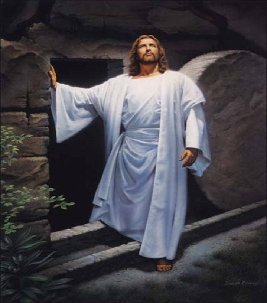





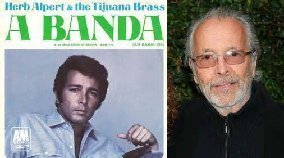

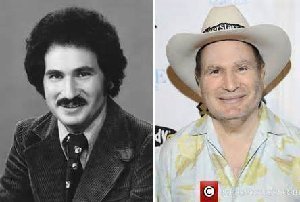










.jpg)



